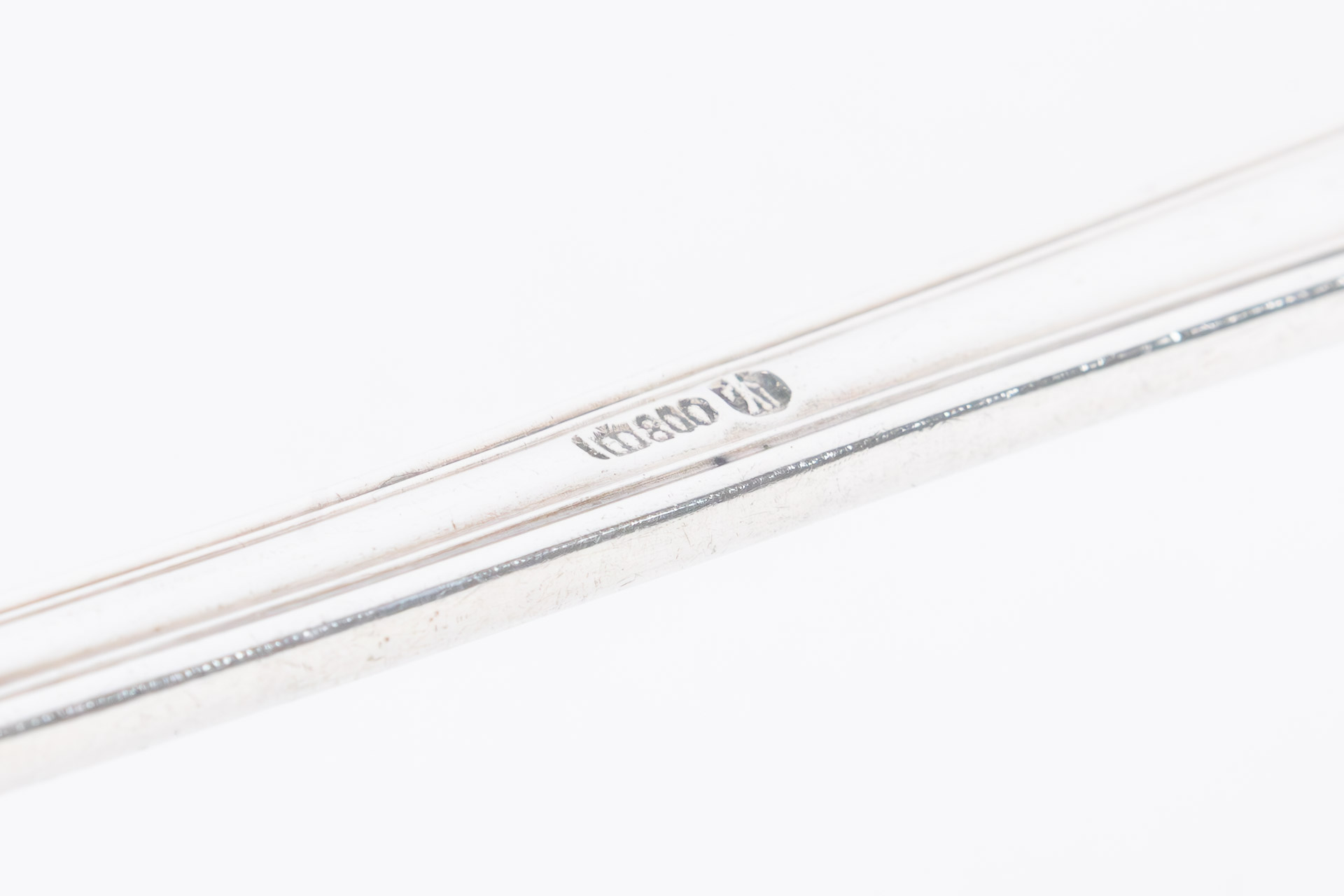This German ladle spoon, crafted around 1900, is a classic example of early 20th-century European silverware. It is designed with a simple yet elegant form, showcasing the craftsmanship typical of the period. The ladle is made from 800 silver, as indicated by the hallmark on the handle. It bears the maker's mark of Gustav Haegermann, a prominent silversmith from Burgdorf, Hanover. The spoon's design is characterised by a broad, deep bowl and a gracefully curved handle, offering both functionality and aesthetic appeal.
Condition Report
The ladle spoon is in very good condition, with minor signs of wear consistent with its age and use. The silver surface retains a bright sheen, indicative of careful preservation and minimal exposure to tarnish. The hallmark and maker’s mark are clearly legible, attesting to its authenticity and provenance. There are no significant dents or scratches, and the structure of the spoon remains robust, ensuring its usability and display potential. This piece has been well maintained over the years, preserving its historical and functional integrity.
Dimensions
Weight: 215gms, Length: 30cm, Width Spoon: 10cm, Height Spoon: 8cm.
A Functional Piece for Serving
The primary use of this ladle was likely for serving soups or stews, a staple in both domestic and formal dining settings of the time. Its generous bowl size and sturdy handle make it ideal for reaching into deep pots, allowing for efficient serving. While originally a practical item, its design and craftsmanship also rendered it suitable for display, often used in formal dining settings to complement other silverware.
Fine Example of Early 20th-Century German Silverware
This ladle spoon represents the utilitarian yet refined style prevalent in German silverware at the turn of the 20th century. The design is marked by clean lines and a focus on function, with minimal decorative elements that highlight the quality of the silver itself. Such pieces were common in affluent households, reflecting both the culinary and social customs of the era. The stylistic simplicity ensures that the piece seamlessly complements a variety of table settings, whether modern or traditional.
The Craft of Silver Smithing
The production of this ladle involved traditional silver smithing techniques. The 800 silver grade is a standard alloy used in German silverware, ensuring a balance between durability and malleability. The ladle would have been cast and then hand-finished, with particular attention given to the smoothness of the bowl and the curvature of the handle. The hallmarking process, which includes the application of the maker's mark and purity stamp, serves as both a guarantee of quality and a historical record of its manufacture.
Crafted by Gustav Haegermann
Gustav Haegermann, the silversmith behind this piece, was renowned for his quality craftsmanship in Burgdorf, Hanover. His work is characterised by a commitment to precision and elegance, reflecting the high standards of German silverware production at the time. Haegermann's pieces are highly regarded for their clarity of design and functionality, and his maker's mark is a recognised symbol of authenticity and quality in antique silver. His workshop was known for producing items that were both practical and aesthetically pleasing, making them desirable collectibles today.
Collected by Enthusiasts of German Silver
Antique German silverware, such as this ladle spoon, is highly sought after by collectors due to its historical significance and craftsmanship. Collectors are drawn to the quality and durability of the silver, as well as the rich history associated with each piece. Items bearing the marks of renowned makers like Gustav Haegermann are particularly valued for their provenance and the masterful skill involved in their creation. As a result, these pieces often become central items in collections dedicated to European silverware, appreciated for both their aesthetic and functional qualities.













